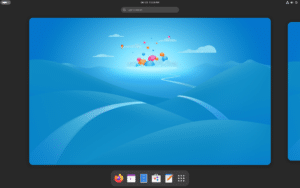The latest version of postmarketOS, v25.06, has arrived—marking a significant step forward for this Alpine Linux-based mobile operating system. Tailored for Linux enthusiasts and developers, postmarketOS continues to offer a streamlined and privacy-friendly alternative to Android and iOS, with a sharp focus on device longevity, modularity, and freedom.
With this release, the project takes a bold step by introducing systemd support, delivering major upgrades to user interfaces, extending compatibility with new smartphones and tablets, and improving installation workflows.
Powered by Alpine Linux 3.22 and now systemd
At its core, postmarketOS 25.06 is built upon Alpine Linux 3.22, benefiting from the latest upstream improvements in security, package management, and performance. But perhaps the most pivotal change is the addition of systemd as an init system option.
While OpenRC remains available, systemd opens the door to better service management, broader compatibility with Linux desktop applications, and improved integration with modern UIs like GNOME and Plasma Mobile. This shift required deep engineering work and contributions from dozens of community developers.
Enhanced Mobile UIs for Every Taste
postmarketOS 25.06 ships with updated versions of its most popular mobile user interfaces:
- GNOME 48 / gnome-shell-mobile 48.mobile.0: Offers massive performance boosts, new font rendering, better notification stacking, and smoother gesture handling thanks to triple buffering.
- KDE Plasma Mobile 6.3.5: Brings a reworked task switcher, status bar improvements, better volume control, dual SIM support, and more UX polish.
- Phosh 0.47.0: Adds lock screen wallpaper support, haptic strength controls, and a new on-screen keyboard called Stevia that replaces squeekboard by default.
- Sxmo 1.17.1: Maintains its OpenRC base but can now be built with systemd manually, offering a minimalist, keyboard-driven experience ideal for advanced users.
New Installer Interface and Simplified Setup
For those installing postmarketOS for the first time, a new graphical installer UI has been introduced. Targeted at laptops, netbooks, and convertibles, it allows users to perform encrypted installations with greater ease. This makes postmarketOS more approachable to newcomers and lowers the barrier to adopting mobile Linux.
Expanding Device Support, Including Camera and Charging
This release significantly expands hardware compatibility:
- New device support includes the Google Pixel 3A XL, Motorola Moto G5 Plus, Xiaomi Mi 9T / K20, POCO X3 NFC, and Mi Pad 5 Pro, among others.
- Camera support has been added for several Qualcomm-based phones, including the OnePlus 6, Moto E5 Plus, and multiple Xiaomi Redmi models.
- Audio, charging, flashlight, and suspend support for MSM89x7 devices has improved considerably.
Downstream kernel ports are now separated into their own category, and while not built by default, users can manually backport them if needed. This reorganization helps clarify device maturity and simplify support.
Optimizing Key Applications for Mobile: Thunderbird and Firefox
Two major applications have seen targeted optimizations for mobile use:
- mobile-config-thunderbird debuts in this release, making the popular desktop email client usable on small touchscreens.
- mobile-config-firefox now includes UI fixes and per-site user-agent spoofing, ensuring websites like YouTube deliver proper mobile experiences.
These enhancements bring postmarketOS closer to being a daily-driver-capable OS for productivity and communication.
Security and Usability Improvements
- openssh-client is no longer installed by default, improving system security by minimizing the default attack surface. It can still be added via
apk add openssh-client. - Several kernel updates and bug fixes improve system stability across a wide range of devices.
- A new default “Evergreen” wallpaper—selected via community poll—adds visual polish while celebrating the postmarketOS identity.
Known Issues and Testing
As always, the postmarketOS team is transparent about limitations:
- Some devices still lack out-of-the-box Wi-Fi support or working microphones.
- GTK 4.18 drops the old GL renderer, which breaks the camera app Megapixels on devices like the original PinePhone and Librem 5.
- Audio issues may persist for users with early v25.06 builds on the OnePlus 6/6T, but workarounds are available.
Installation and Upgrading
Users can install v25.06 by flashing a pre-built image for their device. Due to architectural changes, particularly the move to systemd, upgrading from v24.12 to v25.06 requires a fresh installation. For users not ready to migrate to systemd, traditional upgrade paths via OpenRC remain available.
All documentation is available on the official wiki, and the community remains highly active in assisting new users and maintaining device ports.
Final Thoughts
postmarketOS 25.06 continues its mission of extending the life of mobile devices and providing a truly open, community-driven mobile Linux platform. Whether you’re repurposing an old smartphone or building a privacy-focused daily driver, postmarketOS offers a flexible, evolving solution backed by an active and passionate community.
With systemd now part of its architecture and a broad range of supported devices and UIs, postmarketOS is not only more powerful than ever—it’s also easier to use and closer to a mainstream Linux mobile OS than it’s ever been.












